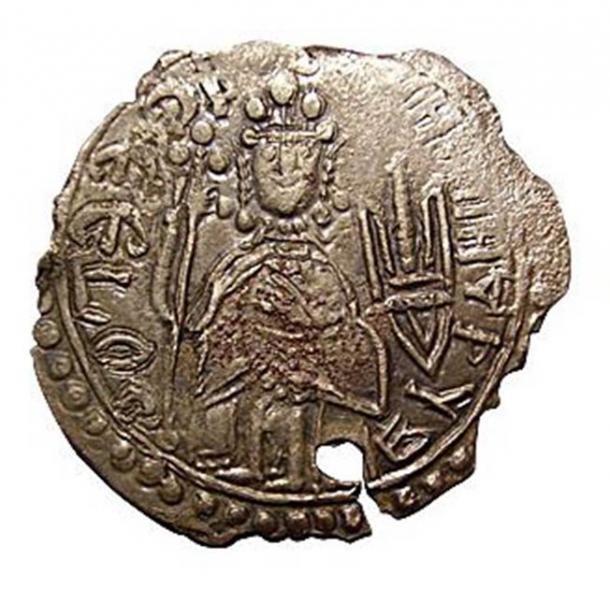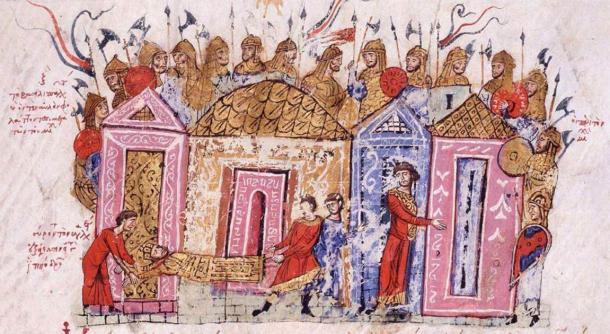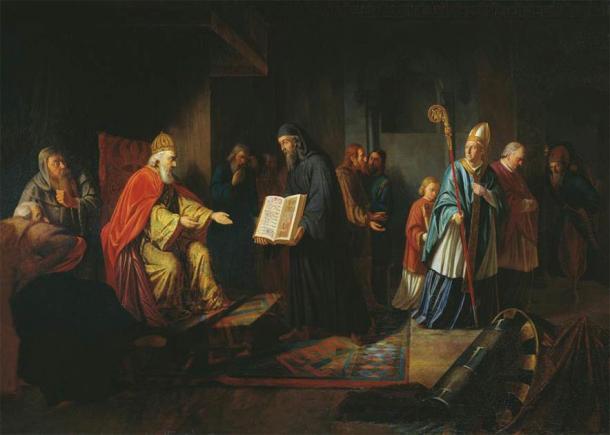It is not uncommon for ancient coins to be found in buried hoards around the world, but some discoveries are rarer than others, such as an unusual find of what seem to be Kievan Rus coins unearthed in Ireland. These silver and gold coins are important, in part because if verified, they are the first Rus-Viking coins found in Ireland, and also because they are providing new insights into the medieval period.
It should be noted that unauthorized metal detectoring is illegal in Ireland in under the National Monuments Act 1930-2014 and it is an offence to use a detection device to search for archaeological objects in the Republic of Ireland without consent from the relevant authority.
The cache of coins was unearthed by metal detector enthusiast Robert Carley in Glanmire, near Cork City. He wrote in a letter, which is quoted by Undercoil.com, that “These coins were detected on the ravine edge when part of it had devolved after heavy rain.” Carley lives nearby and believed that there was a chance of finding something with his detector. It was here that he found the coins after they had been exposed.

Reverse of srebrenik of Vladimir (Volodymyr) the Great now in the Odessa Numismatics Museum. ( Public Domain )
Coins of the Kievan Rus
Nothing else was found with the cache. The coins are small and stamped with Christian symbols and possibly images of monarchs.
Irish Central reports that Carley had found ‘ancient coins from Kievan Rus , and they date back to the 10th century.’ The Kievan or Kyivan Rus are regarded as important in the history of the modern nations of Russia, Ukraine, and Belarus and they were originally Vikings who ruled a largely Slavic population. They built a massive state centered on Kiev(Kyiv), in modern-day Ukraine and controlled huge swathes of the teritory that is now central and northern Russia.

Varangian guardsmen in an illustration in a medieval chronicle. ( Public Domain )
Making Money Since Volodymyr / Vladimir the Great
The Rurik Dynasty ruled the Kievan Rus state and they began minting their own coins during the reign of Vladimir (Ukrainian: Volodymyr) the Great (c 958- 1015 AD). Gold and silver coins were produced, and they all had the same signs and images. Many of the coins they minted had the Tryzub (trident) symbol, which was adopted as one of the symbols of Ukraine after the collapse of the Soviet Union in 1991.According to Irish Central , ‘The coins didn’t have any significant role in the country’s economy since they were mainly a symbol of the current ruler’s power’. Before Vladimir the Great (Volodymyr), the Rus had used Arab and Byzantine currency or gold bars. The minting of their own money ‘was a political declaration of the country’s sovereignty and significance,’ according to Irish Central .

Ivan Eggink (1787—1867). ‘Grand Prince Vladimir is choosing the religion.’ ( Public Domain )
The Kievan Rus Coins Could Have Been Mercenary Pay
According to Irish Central , ‘The coins didn’t have any significant role in the country’s economy since they were mainly a symbol of the current ruler’s power’. Before Vladimir the Great (Volodymyr), the Rus had used Arab and Byzantine currency or gold bars. The minting of their own money ‘was a political declaration of the country’s sovereignty and significance,’ according to Irish Central .
The Kievan Rus Coins Could Have Been Mercenary Pay
The Kievan Rus coins are exceedingly rare and were probably used to pay traders and mercenaries. Whoever buried them in the ground never came back to retrieve his small treasure of coins, which are remarkably well-preserved. The identity of the owner is not known but he may have been a Viking .
In the 10th and 11th century AD, Vikings had settled in Cork and turned it into a major trading center that was linked to the Scandinavian trading networks, which extended as far east as Kievan Rus , where it is understood Varangians (Vikings) were ruling the Kievan Rus territory between the 9 th and 11 th centuries. The Rus continued to have close relations with the Vikings.
Coins of Kievan Rus
These are high quality coins, which is not unusual. Often lower quality coins are found in the former lands of the Kievan Rus and their better quality silver ones are found outside it. It appears that the ones with a higher purity of silver were used to pay foreign merchants and mercenaries. The Viking coins may also have been used for diplomatic purposes. Gift-giving was important to forging alliances in the Middle Ages.
The coins now need to undergo a proper verification and assessment by the relevant historic authorities. In order to properly record artifacts and have a solid record of the object and its context, it is a legal obligation to report all archaeological objects within 96hrs to the National Museum of Ireland or a designated Museum (Sec 5-1, 1994 amendment). This ensures that all details of the find can be expertly recorded and paced correctly in the historical record.
Top image: One of the Kievan Rus Viking coins found in Ireland. Source: Robert Carley
This article was updated 28-8-2020 to better reflect the supposed origin of the coins. It was updated on 31-8-2020 to include details of the legality of metal detecting in the Republic of Ireland, noting that consent is required under the National Monuments Act 1930-2014, (Sec 2-1, 1987 amendment), and that there is also an obligation to report all archaeological objects within 96hrs to the National Museum of Ireland or a designated Museum (Sec 5-1, 1994 amendment).



No comments:
Post a Comment